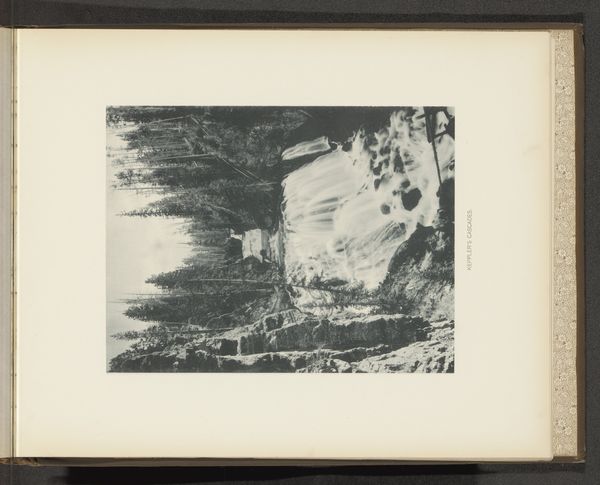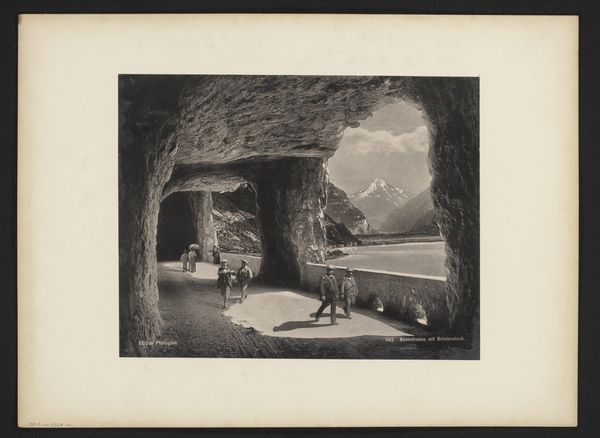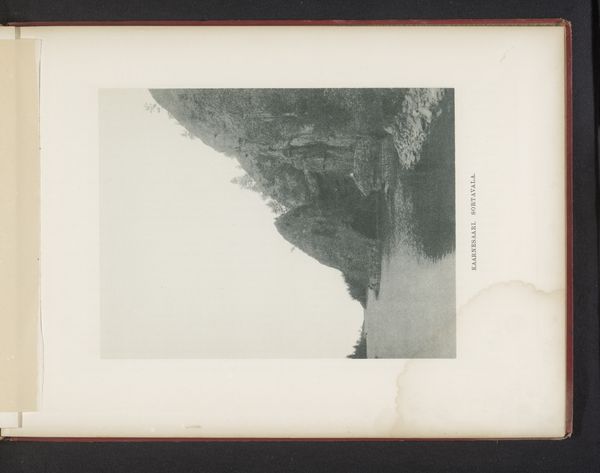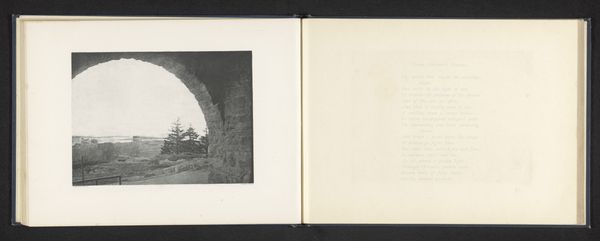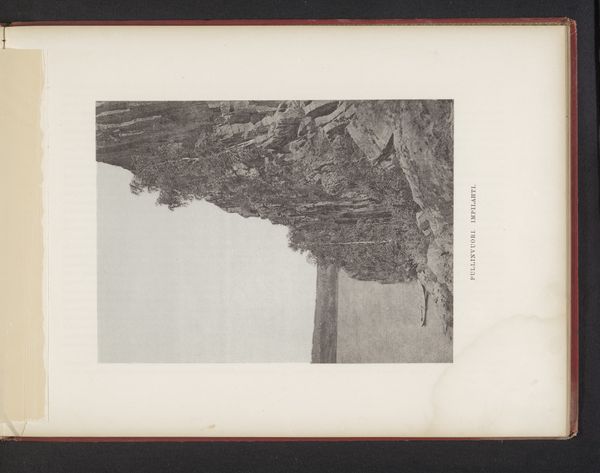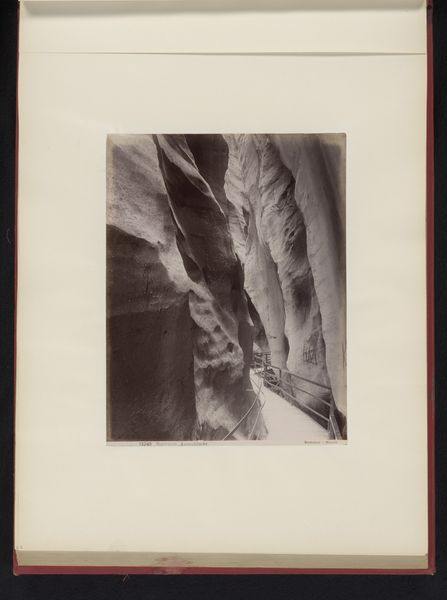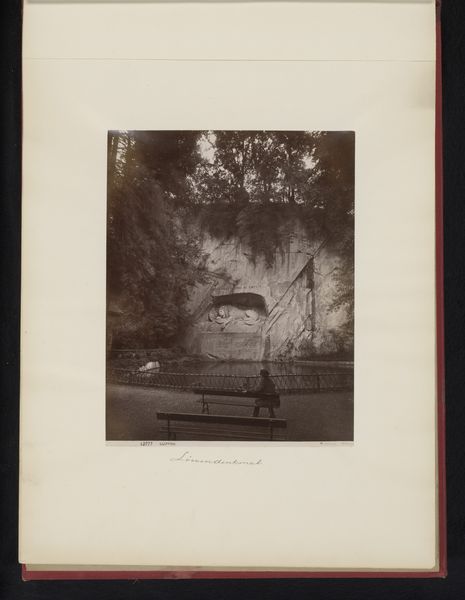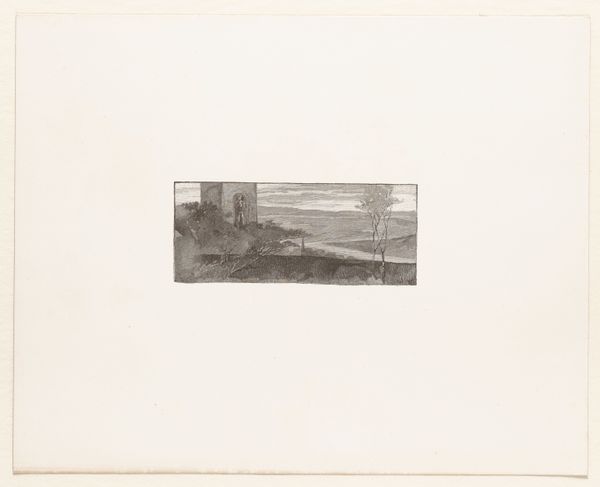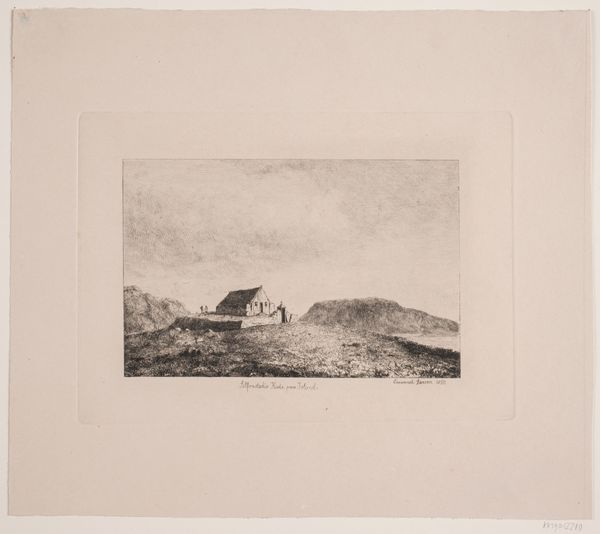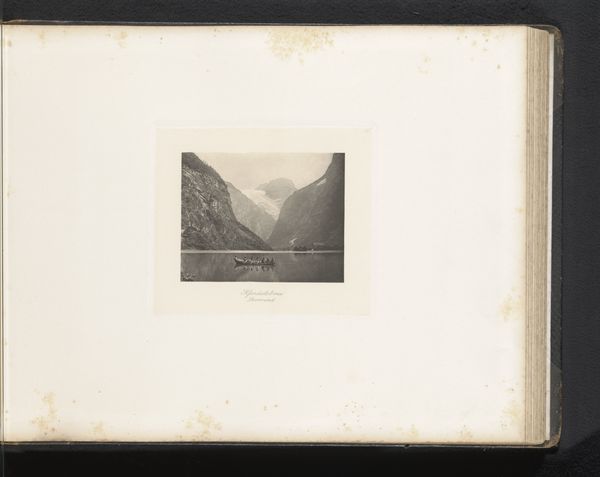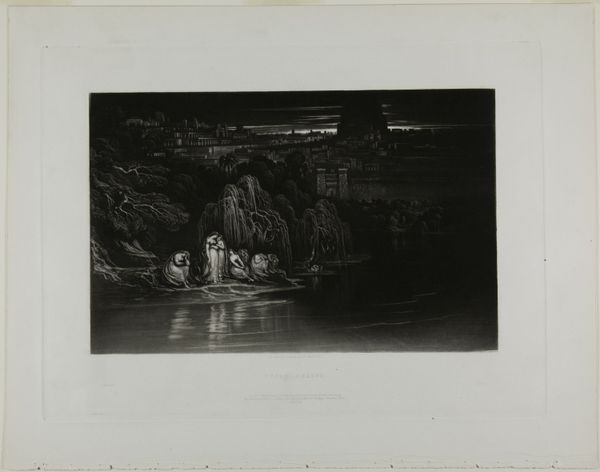
print, photography, albumen-print
#
lake
#
pictorialism
# print
#
landscape
#
photography
#
cityscape
#
albumen-print
#
monochrome
Dimensions: height 335 mm, width 460 mm
Copyright: Rijks Museum: Open Domain
Curator: Here we have an albumen print from somewhere between 1880 and 1900, titled "Gezicht op de Axenstrasse met de Urnersee," which translates to "View of the Axenstrasse with Lake Lucerne." The authorship is unknown, although it resides in the Rijksmuseum's collection. What's your first impression? Editor: Haunting. It's this incredible tension between light and shadow, this constructed road juxtaposed against the massive scale of nature beyond. I see it almost as a visual metaphor for our place within a wider, indifferent universe. Curator: Indeed. Look at the road’s construction—the rough-hewn stone of the tunnel, the careful arrangement of the masonry. These were monumental projects representing considerable investment of resources, both human labor and raw materials. I imagine the laborers and the conditions in which they would have built the road, all manual and physically demanding. Editor: Exactly! And this labor intersects with themes of access and control, doesn’t it? The Axenstrasse wasn't just about moving people; it was about staking a claim, dominating the landscape and, by extension, the people connected to it. What do you make of that lone figure on the road? Curator: It gives scale to the engineering involved but, as well, reinforces ideas about perspective and ownership of landscape through leisure— the road made access much easier and more pleasant. The print itself, being an albumen print, speaks to photographic production practices of the time. Editor: It speaks volumes! Consider that monochrome choice. It emphasizes the industrial against the pastoral and asks viewers to interpret meaning across grayscale values. Then and now this photograph is a tool for framing conversations about our complex relationship to the planet. Curator: I agree; the monochrome focuses the viewer’s attention on texture and light, amplifying contrasts within the scene. One is brought into close proximity with materiality; from the jagged rocks of the tunnel to the reflective lake beyond, these are all processes involved with its making. Editor: Thinking about these social and artistic movements contextualizes this photograph beyond a picturesque scene. Curator: Absolutely. Considering these elements broadens our understanding and reminds us of art’s entanglement with social histories and production methods.
Comments
No comments
Be the first to comment and join the conversation on the ultimate creative platform.

